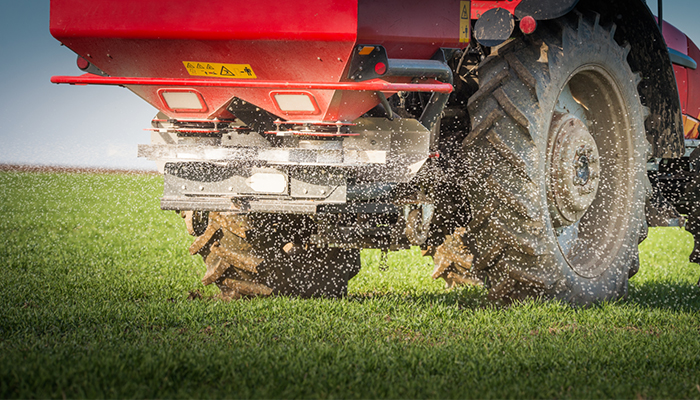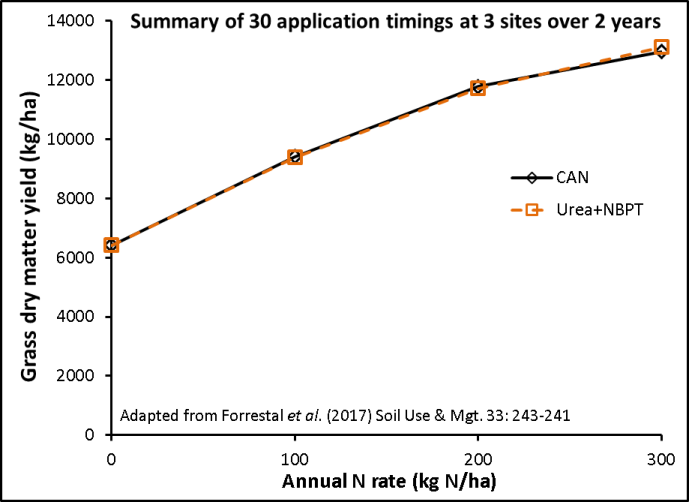23 March 2021
Why You Should Use Protected Urea

Protected urea allows farmers to spread urea based nitrogen during the growing season without the worry of nitrogen (N) being lost from the field through ammonia emissions. It also reduces greenhouse gas emissions and nitrate leaching when compared to CAN Cathal Somers gives more information
Teagasc trial work shows that protected urea achieves the benefits of protecting nitrogen (N) loss and reducing greenhouse gas emissions while yielding as well as CAN over the growing season (Figure 1), a win-win outcome both economically and environmentally.

Figure 1. Protected urea consistently matching CAN grassland yields in Teagasc trials
Reduce Nitrate Leaching:
Nitrate leaching can occur during times of heavy or prolonged rainfall. Free draining soils are particularly susceptible to losses as nitrate is very mobile in soil and can be readily leached to groundwater. CAN is made up of half ammonium and half nitrate. After spreading CAN a large pool of nitrate is placed in the soil is open to being leached away if unfavourable conditions occur.
Protected urea converts to the ammonium form of nitrogen when applied to soil. Ammonium is more stable in soil than nitrate and less susceptible to leaching due to its positive charge. Soil microbes convert ammonium to nitrate almost like a steady conveyer belt; plants take up both nitrate and ammonium as required for growth and have access to a steady flow of available nitrogen as soon as the protected urea granules begin to melt.
Ammonia Emissions & Water Quality
Some farmers do not like to use traditional urea (even during 1st application) as they are concerned that grass growth is poorer with this N source. This is because the use of traditional urea leads to ammonia (N) losses after spreading, even in spring. The amount of ammonia loss can be substantial and is dependent on weather conditions. The highest losses tend to occur during warm and/or windy conditions; however losses can also readily occur in cooler drying hash conditions.
Ammonia in the atmosphere is then deposited into water bodies or other sensitive habitats causing deterioration in water quality and poor grass production on the farm.
Tips
- Protected urea will reduce Ammonia/GHG emissions and reduce nitrate leaching
- Protected urea similar to urea has a lower density than CAN and other compounds, for this reason the fertiliser spreader settings and vane selection may need to be adjusted to achieve the required spread width
- For the greatest protection use protected urea within 12 months as the urease inhibitor will degrade over time in storage
- Potassium and sulphur mixes with protected urea can be purchased, however currently phosphorus (P) blends result in shelf life problems for the protection
- Protected urea is cheaper per unit of N to spread than CAN
- Consult the Teagasc Protected urea fertiliser list here
